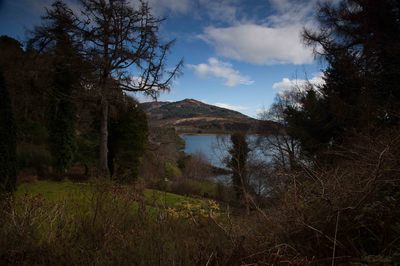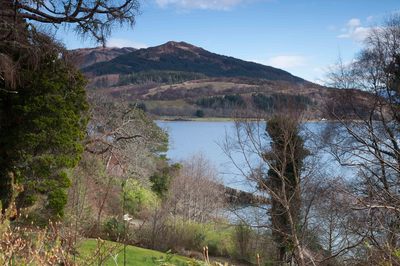|
Recently I have been trying to use my Graduated Neutral Density (ND Grad) filters more to compensate for bright skies and relatively darker foregrounds. I have found, as is common, that being relatively affordable filters, they do tend to result in a bit of a colour cast, sort of blue/purple depending on how intense the filter and how btright the light is. So, since I have two sets of ND Grad filters (Cokin P series and Formatt Hitech) that I would try a little experiment. I set up my Canon EOS 5D Mark II with its EF 24-105mm f/4 L lens on the tripod outside the house, looking towards Sgurr Mor. Not a particularly special compostion but it was lit well from the south-west. I then set the aperture and shutter speed in anual mode according to what the camera meter decided was the proper exposure, 1/50 sec at f/11, ISO 100. Without changing the exposurte I took a photo at the same settings using the various filters. I then repeated the exercise (for the soft grad filters at least) but adjusted the settings for each shot according to what the camera dictated as proper exposure. The results can be seen below and you will see that the filters basically darken down the sky, emphasising the blue and the detail of the clouds. However, at the higher filter intensities there does begin to be a bit of a cast. Also, the ones taken with metering done with the filter in place prvode a better balanced shot I think as you might expect. I think there is little difference between the different types of filter until you get to the more intense and then I feel the Formatt introduces more of a blue/purple cast. It probably doesn't matter too much as this can be corrected in Lightroom by adjusting the image temperature but the experiment does suggest that often less is more, i.e. using less intense filers works best. In a compostion with a brighter, blown-out aky a heavier filter would no doubt work better and almost definitely be necessary to retain any detail int eh sky anyway.
0 Comments
Today I had my first ever experience of film processing and printing. Thanks to my wonderful wife for organising a day session with Simon Larson in Sleat so I could learn some darkroom skills. Also, this meant I had the chance to develop my first ever shots taken with my fabulous Christmas present, my 4x5 View Camera. We had a few issue to deal with including my getting the ISO of the large formaty film I had used wrong and a little bit of light seepage on my older film holders, but otherwise a great and instrcutive day. Simon is a wonderful and inspiring teacher and I will not doubt struggle to remember it all, but I now know where to start.
In terms of images, we manage to print one 8x10" print from my View Camera, see above. This is only a very poor scan of the original print so the quality does not do it justice. Also, given that we developed it for ISO 200 when it should have been 400 means it was under-developed and so is a bit paler than ti should be. The is a little bit of light fogging at the top right side and the top left area of the broch, and on this scan the sky is completely blwon out apart from the top right where something has gone very wrong, nothing like the original print. I have a lot of other negative to try printing myself once I buy the requisite chemicals, etc., so watch this space. Happy Day and a huge thanks to Simon and Aileen. Late this afternoon I took the opportunity of some good light on various trees near Plockton to take some close-up shots of their bark. The Caledonian Rainforest is a fantastic, diverse and hugely interesting woodland, taking all sorts of form, from native pinewoods to Atlantic oakwoods. These shots are of three of the most important species, Scots pine, Sessile oak and Downy birch. I took these with my 31mm extension ube and the aperture at its smallest to try and retain a decent depth of field. The bark of these trees is interesting in its own right but the lichens and mosses that inhabot the neuks and crannies add texture and colour. This shot was taken this morning just before I went into the office. The early light was lighting uo the pine tree and Sgurr Coinneach in the distance and the clouds against the blue sky created an excellent wide-angle photo opportunity. I took this anticipating that I would convert it to black & white but the colour version is good too, witht he bright yellow flowers of the gorse in the foreground adding interest, but the bottom left was a bit blown out where the sun was rising and the colours looked a bit false when I tried to tone it down a bit, see below.
|
AuthorI am an amateur photographer who is also a Chartered Geographer with his own part-time consultancy business and I work as an estate manager for a national conservation charity in Scotland. I am based in Lochalsh, Wester Ross, Scotland, just next to the Isle of Skye. SalesIf you like my photos and are interested in purchasing prints, whether framed, mounted or otherwise please click here.
Archives
May 2024
Categories |



























 RSS Feed
RSS Feed